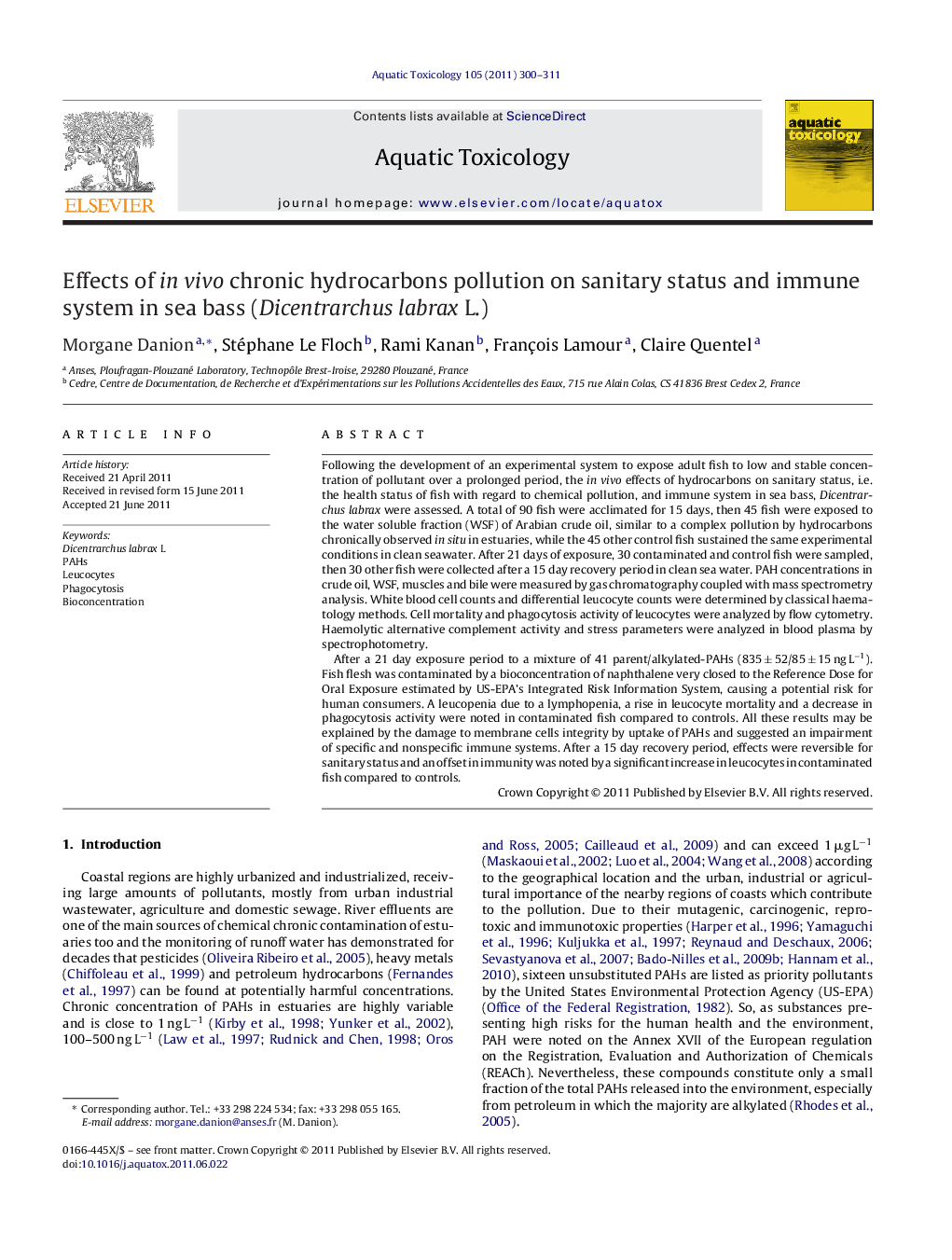| Article ID | Journal | Published Year | Pages | File Type |
|---|---|---|---|---|
| 4529814 | Aquatic Toxicology | 2011 | 12 Pages |
Following the development of an experimental system to expose adult fish to low and stable concentration of pollutant over a prolonged period, the in vivo effects of hydrocarbons on sanitary status, i.e. the health status of fish with regard to chemical pollution, and immune system in sea bass, Dicentrarchus labrax were assessed. A total of 90 fish were acclimated for 15 days, then 45 fish were exposed to the water soluble fraction (WSF) of Arabian crude oil, similar to a complex pollution by hydrocarbons chronically observed in situ in estuaries, while the 45 other control fish sustained the same experimental conditions in clean seawater. After 21 days of exposure, 30 contaminated and control fish were sampled, then 30 other fish were collected after a 15 day recovery period in clean sea water. PAH concentrations in crude oil, WSF, muscles and bile were measured by gas chromatography coupled with mass spectrometry analysis. White blood cell counts and differential leucocyte counts were determined by classical haematology methods. Cell mortality and phagocytosis activity of leucocytes were analyzed by flow cytometry. Haemolytic alternative complement activity and stress parameters were analyzed in blood plasma by spectrophotometry.After a 21 day exposure period to a mixture of 41 parent/alkylated-PAHs (835 ± 52/85 ± 15 ng L−1). Fish flesh was contaminated by a bioconcentration of naphthalene very closed to the Reference Dose for Oral Exposure estimated by US-EPA's Integrated Risk Information System, causing a potential risk for human consumers. A leucopenia due to a lymphopenia, a rise in leucocyte mortality and a decrease in phagocytosis activity were noted in contaminated fish compared to controls. All these results may be explained by the damage to membrane cells integrity by uptake of PAHs and suggested an impairment of specific and nonspecific immune systems. After a 15 day recovery period, effects were reversible for sanitary status and an offset in immunity was noted by a significant increase in leucocytes in contaminated fish compared to controls.
► Adult fish were exposed to in vivo chronic hydrocarbons pollution thanks to a new experimental system. ► The sanitary status i.e. the health status of fish with regard to chemical pollution was evaluated. ► A high bioconcentration of naphthalene was found in fish flesh causing a potential risk for human consumers. ► An impairment of specific and nonspecific immune systems in sea bass was noted probably due to membrane cells integrity damage by PAHs uptake.
